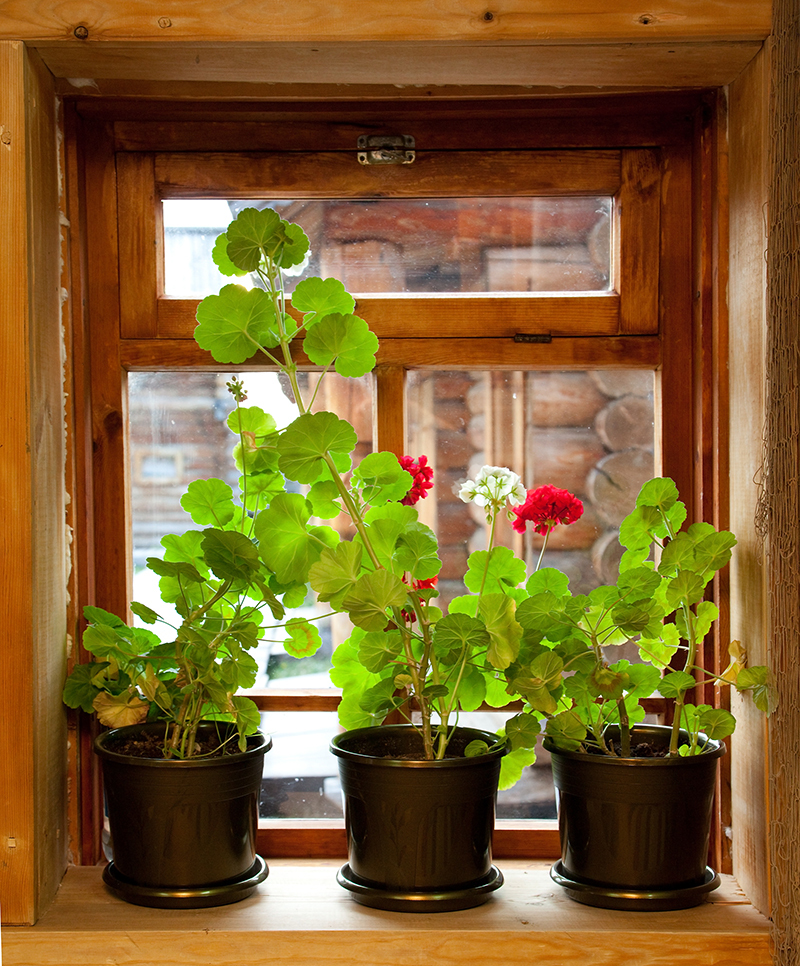The Art of Preserving Cut Flowers at Home
Posted on 15/08/2025
The Art of Preserving Cut Flowers at Home
Cut flowers bring a burst of beauty and freshness into our homes, but their allure often seems fleeting. Have you ever wished your colorful bouquet would last longer? Mastering the art of preserving cut flowers will not only keep your living spaces vibrant but also help you treasure those special moments just a little bit more. In this comprehensive guide, we'll dive into a variety of techniques and expert tips to extend the life and vibrancy of your cut flowers, transforming your home into a fragrant sanctuary for days or even weeks.
Why Preserve Cut Flowers?
Fresh blooms symbolize celebration, love, and the joy of nature indoors. Unfortunately, fresh-cut flowers can begin to wilt within days, losing their vivid color and delicate scent. Understanding how to preserve cut flowers at home is more than just a practical skill; it's an art that blends tradition, science, and a dash of creativity.
- Sentimentality: Preserve flowers from special occasions.
- Cost-effectiveness: Extend the life of your floral purchases.
- Eco-friendly: Reduce waste by minimizing flower replacements.
- Home decor: Enjoy elegant arrangements for longer periods.

The Basics: How Do Cut Flowers Age?
To effectively preserve cut flowers at home, it's crucial to understand the biological processes that cause them to wilt:
- Lack of nutrients: Once separated from the plant, flowers lose their nutrient supply.
- Water loss: Flowers continue to transpire, drying out over time.
- Bacterial growth: Microbes in the vase water speed up decay.
- Ethylene gas: This natural hormone triggers ripening and senescence (aging).
With these challenges in mind, let's explore the art and science of preserving fresh-cut flowers at home.
Step-by-Step Guide: Preserving Cut Flowers in Water
1. Choose Quality Flowers
Begin with fresh, healthy blooms. If you're picking from your own garden, cut early in the morning for maximum hydration. If purchasing, select stems with firm petals and supple leaves.
2. Prepare Your Tools and Workspace
- Sterilize shears or scissors to prevent bacteria transfer.
- Use a clean vase to minimize bacterial contamination.
3. Trim Stems Correctly
Cut each stem at a 45-degree angle to increase surface area for water uptake. Remove any leaves below the waterline to prevent rot.
4. Hydration Magic: Vase Water & Solutions
- Fresh, room-temperature water is essential.
- Add a floral preservative or make your own (see below).
- Change water and re-trim stems every 2 - 3 days.
5. DIY Flower Preservative Recipe
Commercial preservatives feed flowers and reduce microbes, but you can easily make your own at home:
- 2 tablespoons lemon juice
- 1 tablespoon sugar
- 1/2 teaspoon bleach
- 1 quart of lukewarm water
Mix well and pour into your vase. The sugar nourishes, lemon juice maintains acidity, and bleach inhibits bacteria.
6. Ideal Placement
Display fresh flowers away from direct sun, heaters, and ripening fruit (which emits ethylene gas). Cooler temperatures slow the aging process and keep your arrangement bright and lively.
Creative Techniques for Long-Lasting Cut Flowers at Home
1. Glycerin Preservation
For a unique, flexible way to preserve cut flowers at home, try glycerin. This method replaces water in plant tissues with glycerin, creating soft, supple everlasting blooms.
- Mix 2 parts lukewarm water with 1 part glycerin.
- Place trimmed stems in the solution for 2 - 4 weeks.
- Blooms darken slightly, taking on a glossy appearance.
2. Pressing Flowers
Pressed flowers make exquisite art, greeting cards, bookmarks, or keepsakes.
- Lay flowers between two sheets of absorbent paper.
- Place inside a heavy book, weighing it down further if needed.
- After 2 - 4 weeks, flowers will be flattened and perfectly dried.
3. Silica Gel Drying
Preserve the structure, color, and form of your favorite flowers using silica gel:
- Fill an airtight container with a layer of silica gel crystals.
- Bury the blooms gently, covering completely with more silica.
- Seal tightly and wait 1 - 2 weeks for optimal results.
- Brush off excess crystals and display your beautifully preserved flowers.
4. Air Drying
Among the oldest and simplest ways to extend the life of cut flowers is traditional air drying.
- Gather stems and tie loosely with string.
- Hang upside down in a cool, dark, well-ventilated area.
- After 2 - 3 weeks, your flowers are ready for rustic arrangements or craft projects.
Bonus Techniques: Waxing & Microwave Drying
Wax Dipping for Shimmering Blooms
To give cut flowers a unique preserved look, try wax dipping:
- Melt paraffin wax in a double boiler.
- Let wax cool to about 130?F.
- Dip individual blooms briefly, shake off excess, and let dry upright.
- Flowers take on a glossy sheen and last for months in cool, dry conditions.
Microwave Flower Drying
Short on time? Use your microwave to quickly dry and preserve blooms:
- Layer flowers between paper towels or in a microwave flower press.
- Microwave in short bursts (30 seconds) and check frequently.
- Perfect for press-drying sturdy petals and leaves.
Expert Tips for Success: The Art of Extending the Life of Cut Flowers
- Cut stems under water to prevent air from entering the vascular system and blocking water uptake.
- Strip all foliage below the waterline to prevent rot and bacterial growth.
- Never combine daffodils with other flowers in an arrangement; their sap can damage other blooms.
- Use distilled water if possible--tap water minerals may reduce vase life.
- Add a copper coin or crushed aspirin to vase water as additional antimicrobial agents.
- Refrigerate overnight to dramatically extend the life of your bouquet.
How to Care for Different Types of Cut Flowers at Home
Not all flowers age at the same rate. Here's how to best preserve popular types:
- Roses: Remove outer "guard petals." Use a sharp knife for clean stem cuts.
- Lilies: Remove pollen to prevent staining and prolong bloom.
- Hydrangeas: Submerge entire flower head in water for a few hours if wilting.
- Tulips: Prefer cold water and frequent trimming to prevent droop.
Flowers That Last the Longest
- Carnations
- Alstroemeria
- Chrysanthemums
- Sunflowers
- Orchids
Displaying Your Preserved Flowers
The beauty of preserving cut flowers at home lies in creative display. Here are some ideas for showing off your artistry:
- Frame pressed flowers behind glass for timeless wall art.
- Fill vintage jars or shadow boxes with silica-dried blooms.
- Incorporate dried flowers into wreaths, bouquets, or handmade paper crafts.
- Use glycerin-preserved stems in arrangements that require flexibility, like garlands or boutonnieres.
Eco-Friendly and Sustainable Flower Preservation
Preserving cut flowers at home is also a sustainable practice. By extending the life of a bouquet, you reduce the frequency of replacing flowers. Compost trimmings, reuse vintage vases, and experiment with native species that naturally last longer after cutting.
Eco-conscious Flower Tips
- Opt for locally grown, seasonal varieties.
- Consider growing your own cutting garden for endless supply.
- Recycle or upcycle containers for natural, rustic arrangements.
- Compost spent blooms and leaves for a zero-waste floral routine.
Common Mistakes to Avoid When Preserving Flowers
- Using dirty tools or containers: Bacteria cause rapid wilting.
- Neglecting to change water: Fresh water is key to longevity.
- Filling vases too full: Submerged leaves accelerate decay.
- Placing arrangements near fruit or sunlight: Both decrease lifespan.

Frequently Asked Questions
1. How long can I expect preserved cut flowers to last?
Properly cared-for fresh bouquets can last anywhere from 7-14 days, while dried or glycerin-preserved blooms last for months to years, depending on methods and conditions.
2. Is there a way to revive wilted cut flowers?
Try re-cutting stems underwater, changing water, and placing flowers in a cool environment. For severe wilt, especially with hydrangeas, submerge the whole bloom in water for a few hours.
3. Can I mix different preservation methods?
Absolutely! Combine air-dried and pressed flowers in arrangements, or decorate frames with a blend of silica-dried and wax-dipped blooms for eclectic displays.
Conclusion: Embrace the Joy of Homemade Flower Preservation
Mastering the art of preserving cut flowers at home is a rewarding journey--one that marries scientific precision with personal creativity. Using these expert techniques, you can enjoy beloved bouquets far longer, preserve memories, and infuse your home with a lasting, natural charm.
Whether you choose simple water maintenance, try glycerin or silica, or explore pressing and drying, every effort you make is part of an honored tradition--celebrating the ephemeral beauty of flowers by making it endure.
So, gather your favorite blossoms, unleash your inner artisan, and let preserved flowers become the timeless centerpiece of your home.
Latest Posts
Let Nature Reveal Your Perfect Flower Persona
Peony Flowers Decoded: What Each Colour Represents in Culture and Tradition
Perfect Flowers to Send for a Loved One's Birthday
Exploring 7 Intriguing Facts About Tulips You Didn't Learn in School
8 Hidden Facts About Sunflowers That Will Change How You See Them






